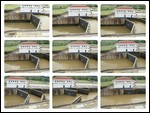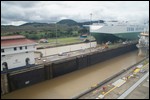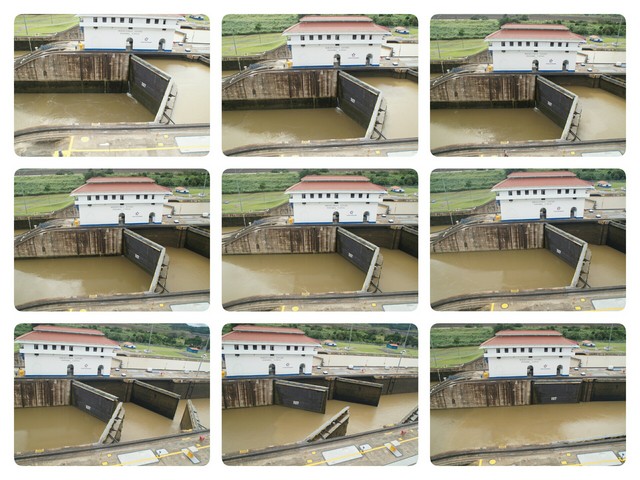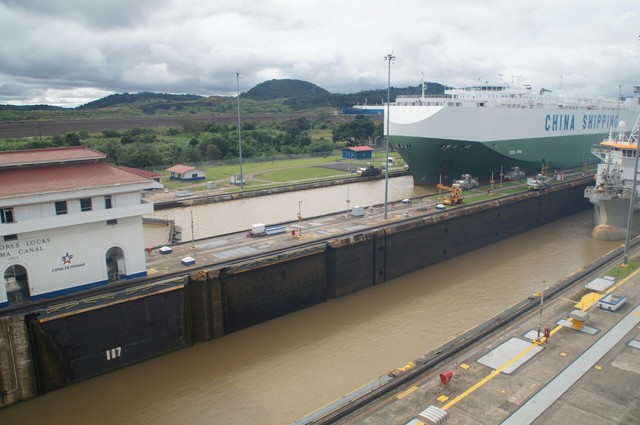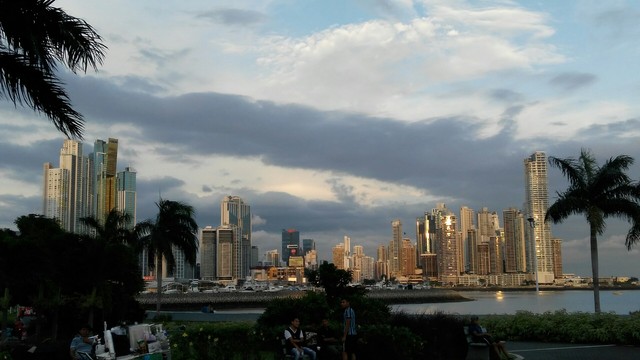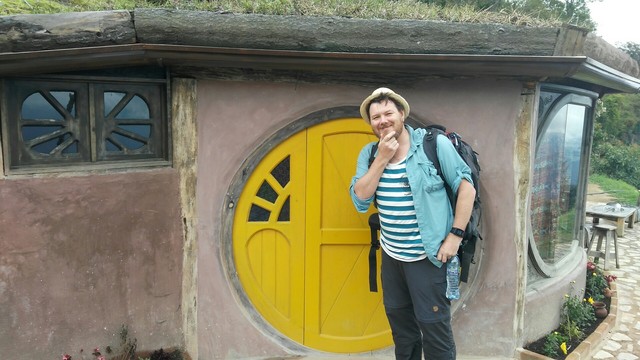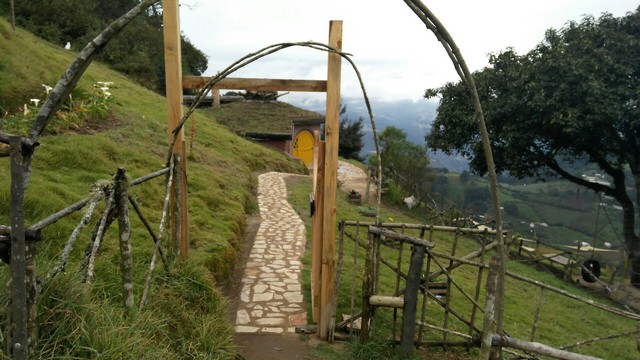Everybody pulled their weight, and despite the fact that the hostel had turned off the water (meaning that flushing would have to be made by means of buckets of rainwater) everyone was up and ready to go before 5.
Hitting the Pan-American highway, we made good speed and managed to cross Puente de las Américas before noon, and thereby entering South America in time for lunch. A point-and-choose buffet place offered what turned out to be the driest, least yummy lasagne ever. The chicken they had used, rather than pork-and-beef mince might have been a deciding factor.
The early arrival to Panama City meant that we had time to go to the canal, and time it with a ship passing through. A timing that was welcomed by all, and pretty much necessary for those of us who planned on flying out the next day.
The Panama isthmus marks the shortest distance between the Pacific and the Atlantic oceans (other than where they actually meet, such as Cape Horn) and in the late 19th century came the idea of connecting Lake Miraflores with the Pacific, construct lake Gatun and connect it with the Caribbean and connect the two lakes with each other. Said and done, and in 1904 construction began of the Panama Canal. Workers from many countries gathered, many of whom were from other parts of Latin America. The workers from Ecuador sported their favourite type of hat, a delicately weaved straw number in light colours, designed to give protection from the sun. Workers from other countries soon followed suit, and thats how we got the famous Panama hat. From Ecuador. The technical difficulties were of no to little concern, as the engineering solutions used were clever and effective, even by today's standards. The finance and politics of the construction were a different story, though. Technically finished in 1914, the official inauguration of the canal was postponed to 1920 due to the Great War. Frenchman Philippe Bunau-Varilla, acting as Panama's ambassador to the United States, struck a rather terrible deal with the USA. Well, not terrible for Buneau-Varilla, nor for USA, but for Panama and it's people. USA had control over the canal and its banks for a long time. Discontent arose in the sixties, and in 1977 then president Carter finally released US control of the canal, effective as of 1999.
The cheapest fare anybody has paid to use the canal was 36 cents, paid by swimmer, adventurer and travel writer Richard Halliburton, as he swam the stretch. Nowadays, and for, you know, actual ships, the fare is slightly bigger. Much revenue is made from passing ships, but the canal also provides income through tourism.
As the canal system included two lakes, at 16 and 26 metres above sea level, a set of locks has to be used to deal with the difference in the elevations. The lock on the Pacific side is called Miraflores, and we got to see it in action as a big freighter, as well as a tourist vessel and a private sail boat passed through from the lakes towards the Pacific, in a process spanning more than an hour and a half. The civil engineer in me squeed internally at the sight of the technological marvel, and the experience is highly recommended.
The biggest box of the Panama checklist already ticked, we arrived at the hotel at our very final destination of this long trip. Some had been travelling together for eight weeks, some for two, but either way, it was a night for farewell. After a short stroll along the coastline, taking in the sights of the surprisingly futuristic skyline of the city and a farewell dinner, we went into the cosy Casco Viejo (Old Town) for drinks. At La Rana Dorada they both serve and brew the beer with the same name, and upon sitting down, the staff promptly brought out a boat-shaped tray with samples of their selection.
The IPA and their Selleccion Limitada stood out, and the music played was excellent.
As nice as Casco Viejo is, I had to leave in a reasonable hour in order to get to the airport for my morning flight. It's not often that I sway widely from my planned itinerary, but one place in particular that I hadn't explored enough stood out in this odyssey: Antigua in Guatemala, to which it's easy enough to fly via.
High up in the mountains, with the best view of the area and most of the volcanoes, two crafty people has built what is known as Hobbitenango, which translates as 'Place of the hobbits'. It's an eco village, with a restaurant, a camp site, some cabins, a few allotments, all in the rustic style of the Shire. The names of the food and drinks served are inspired by Lord of the rings (to the fullest extent of copyright law), there are geeky boardgames and archery, and they serve craft beer from two local microbreweries. In addition, it's located at such an altitude that the temperature is quite cool, and the view is spectacular. So yes, quite a place for a Northern geek such as myself. There was also enough time to revisit the cobbled streets of the town itself, with the now, I assume, world famous Panqueques Andrés (the best baconless brekkie ever) at Café Condesa and the delicious middle eastern taste of Zoola.
But all good things must come to an end, and after a couple of relaxing days, I found myself again waiting for a shuttle to the airport, and this time to go back to the midwinterness of Sweden, and to my apartment, and my work, and my everyday life. Oh, and Rogue One.
